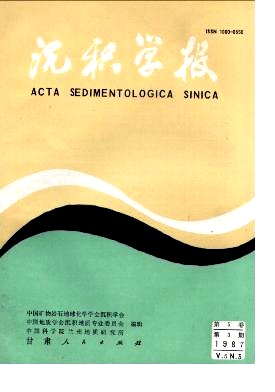MINERALIZATION RANDOMNESS AND THE STATISTICAL ANALYSIS FOR SEDIMENTARY-REWORKING ORE DEPOSITS
- Publish Date: 1987-09-10
Abstract: This paper deals with mineralization randomness, it is emphasized that mineralization model, the key to find hidden orebodies, should be established on the basis of probability theory. The paper shows clearly that probability distribution types of elements depend on neither their content nor their occurring form, but may be controlled by the elements' geochemical behavior which, in turn, is determined by the environment. For example, during sedimentary processes, titanium is a geochemically inactive element and no matter how low its content in sedimentary rocks is, it obeys normal distribution yet; however in the basic magmatic system titanium shows geochemically activity, and no matter how abundant its concentration in trap is, it does not obey normal distribution and results in asymmetrical distribution of positive biasness with a quite long tail. Owing to later geological events, geochemically active elements in source beds could be mobilized and transported in the oreforming solution, which, in the form of the random walk, migrates into reservoir beds and some orebodys are formed. This mineralization processes are inhomogeneity in space and have many stages in time. The sampled population of ore-forming elements then consist of a mixture of a lot of indivdual populations. For example, the content of copper occurred in copper deposits in Centeral Yunnan in China is of asymmetrical distribution with positive biasness. This distribution can be broken into three kinds of normal, which are characterized by large average value with large standard deviation. In contrast to active elements, the cumulation of geochemically inactive elements, such as iron, may result from rock-forming elements being intermittently eliminated from ore-forming system. Therefore, in sedimentary-reworking iron deposit, such as in the Shilu iron deposit, the histogram of total iron values shows an asymmeteric distribution with negative biasness, which can also be divided into three kinds of normal, but its subdistribution is characterized by large average value with small standard deviation. Owing to overlaping Poisson distributions with different means, the spatial distribution of copper deposits obeys negative binomial distribution. Frequency distribution of structural line density could well fitted negative binomial model.
| Citation: | Yang Weihua, Liu Youmei. MINERALIZATION RANDOMNESS AND THE STATISTICAL ANALYSIS FOR SEDIMENTARY-REWORKING ORE DEPOSITS[J]. Acta Sedimentologica Sinica, 1987, 5(3): 159-170. |






 DownLoad:
DownLoad: